|
 |
Lo Scheggia
|
|
Italian Early Renaissance Painter, 1406-1486 |
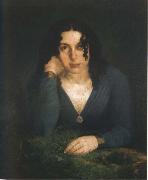 |
Lilly martin spencer
|
|
1822-1902
American painter of English birth. At the age of eight, she and her family emigrated to America, and after three years in New York they moved to Marietta, OH. In 1841 her father took her to Cincinnati, where she exhibited and received help from artists such as the animal painter James Henry Beard (1812-93). However, she refused the offer of the city's most important art patron, Nicholas Longworth, to assist in her art studies in Boston and Europe. Instead she stayed in Cincinnati and married an Englishman, Benjamin Spencer, by whom she had thirteen children, seven living to maturity. |
 |
LELY, Sir Peter
|
|
Dutch/English painter (b. 1616, Soest, d. 1680, London
Dutch painter, draughtsman and collector, active in England. By a combination of ability and good fortune, he rapidly established himself in mid-17th-century London as the natural successor in portrait painting to Anthony van Dyck. Between van Dyck's death in 1641 and the emergence of William Hogarth in the 1730s, Lely and his successor, Godfrey Kneller, were the leading portrait painters in England. After the restoration of the monarchy in 1660, Lely dominated the artistic scene, and his evocation of the court of Charles II is as potent and enduring as was van Dyck's of the halcyon days before the English Civil War. Although Lely's reputation was seriously damaged by portraits that came from his studio under his name but without much of his participation, his development of an efficient studio practice is of great importance in the history of British portrait painting. The collection of pictures, drawings, prints and sculpture |
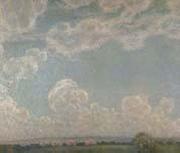 |
Le Sidaner Henri
|
|
Ile Maurice 1862-Versailles,1939
was an impressionist painter born to a French family in Port Louis, Mauritius. In 1870 he and his family settled in Dunkirk. Le Sidaner received most of his tutelage from the Ecole des Beaux-Arts under the instruction of Alexandre Cabanel but later broke away due to artistic differences. He traveled extensively throughout France and also visited many cities around the globe such as London, New York, Venice and Paris as well as some small villages throughout Europe. Le Sidaner exhibited at the Salon, the Galeries Georges Petit in Paris and the Goupil Gallery in London. He lived in Gerberoy, France. Le Sidaner's work was referenced in Marcel Proust's novel In Search of Lost Time. |
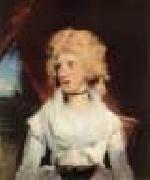 |
LAWRENCE, Sir Thomas
|
|
English painter (b. 1769, Bristol, d. 1830, London).
Thomas Lawrence was born in Bristol on May 4, 1769. At Devizes, where his father was landlord of the Black Bear Inn, Thomas's talents first became known. Fanny Burney, a prodigy herself, reports that in 1780 Sir Joshua Reynolds had already pronounced Lawrence the most promising genius he had ever met. When Thomas was 10, his father moved the family to Oxford and then to Bath to take advantage of the portrait skill of his son. At the age of 17 Lawrence began to paint in oil, all his previous work having been in pastel. In 1787 the family moved to London, and by 1789 he was challenging Reynolds. When Reynolds died in 1792, Lawrence was appointed to the lucrative post of painter in ordinary to the king. He soon became the foremost portrait painter in England, a position he maintained until his death. His portraits of women are models of beauty and elegance, whether the sitter be a tragic actress like Mrs. Siddons, a social figure like the Princess de Lieven, or a personal friend. At the close of the Napoleonic Wars, Lawrence was knighted and commissioned to paint the leading sovereigns and statesmen of Europe. When he returned to England in 1820, he was elected president of the Royal Academy; he handled the affairs of his office with tact and urbanity. He died on Jan. 7, 1830. Following the English masters of the 18th century, Reynolds, Thomas Gainsborough, and George Romney, Lawrence carried on the great tradition of society portraiture and raised it to new heights of dash and elegance, though not of psychological penetration. He was by no means an artist of the astonishing insight of Gainsborough, and he did not have the occasionally disconcerting originality of Reynolds. Lawrence had their faults: all were affected by the distorting demands of their fashionable clientele, and all succumbed to them. He had the least to say, and he reflected his sitters' own best views of themselves, yet even they must sometimes have been surprised at their own magnificence. Handsome his portraits undoubtedly are; all the women are strikingly beautiful, the men brave and distinguished. Lawrence enjoyed his great success. He lived for his work, never married, and was a prodigious worker. He was of an exceptionally generous nature, as an artist and as a man, with a rare talent for appreciating and encouraging the talents of others. He was an ardent collector of Old Master drawings; his collection, which was dispersed after his death, |
 |
Lambert Sustris
|
|
(c. 1515-1520 - c. 1584) was a Dutch painter active mainly in Venice during the Mannerist style. He is also referred to as Alberto de Olanda (Albert of Holland). He was born in Amsterdam, and only came to Venice when over 40 years old. His training is unknown, but he was utilized by the studio of Titian for the depiction of landscapes. He accompanied Titian on his trips to Augsburg in 1548 and 1550 - 1551, and there executed portraits. Returning to Venice, he was influenced by Parmigianino and Andrea Meldolla. He was a teacher to Girolamo Muziano. His son was Friedrich Sustris.
|
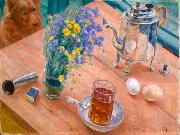 |
Kuzma Sergeevich Petrov-Vodkin
|
|
(1878, Khvalynsk, now Saratov OblasteFebruary 15, 1939, Leningrad) was an important Russian and Soviet painter and writer.
Kuzma Petrov-Vodkin was born in Khvalynsk (Saratov Oblast) into the family of a local shoemaker. His first exposure to art was in his early childhood, when he took some lessons from a couple of icon painters and a signmaker. Still, Petrov-Vodkin didn't quite see himself in art at that time; after graduating from middle school, he took a summer job at a small shipyard with plans to get into railroad college in Samara. After failing his exam, he turned to "Art Classes of Fedor Burov" in 1893.
In April 1895, Burov died and for some time Petrov-Vodkin took different painting jobs in the vicinity of Saratov. By chance, his mother's employer invited a well-known architect, R. Meltzer. Petrov-Vodkin was introduced to the guest and impressed him enough to get an invitation to study art at Saint Petersburg. The education was financed by a charitable subscription among local merchants. He also met at this time Borisov-Musatov, an important painter resident in Saratov, who encouraged Petrov-Vodkin to continue his studies.
Petrov-Vodkin stayed in Saint Petersburg from 1895 to 1897 studying at the Baron Stieglits School, before moving to the Moscow School of Painting, Sculpture and Architecture. There Petrov-Vodkin was a student of Valentin Serov, Isaak Levitan and especially Konstantin Korovin. In 1901 he travelled to Munich to take classes with Anton Ažbe.
He graduated in 1904.
|
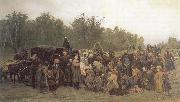 |
Konstantin Savitsky
|
|
Russian Painter, 1844-1905
was a Russian realist painter born in the city of Taganrog in the village Frankovka or Baronovka, named after former governor Otto Pfeilizer-Frank. Today this area is occupied by Taganrog Iron and Steel Factory TAGMET. Savitsky's family lived in the building of Taganrog Gymnasium for Boys, where his father worked as a doctor. In Frankovka the family rented a summer house. Savitsky spent his childhood and youth in Taganrog. He showed an interest for painting in the early childhood. Being on the shore of Azov Sea with his parents, he loved to make sketches, and drawing lessons at Gymnasium were his favourite subject. When Konstantin was fifth-grader at Taganrog Gymnasium, his teenager's life changed unexpectedly. Both of his parents died suddenly. Kostya was taken by his uncle who lived in present-day Latvia and became his guardian. There Savitsky entered a private boarding-school and in 1862 he graduated and left for Saint Petersburg, where entered The Imperial Academy of Arts in Saint Petersburg. Personal contacts with outstanding representatives of Russian culture - Ilya Repin, Ivan Shishkin, Viktor Vasnetsov, Mark Antokolski, Stasov, Nikolai Mikhailovich Karamzin - made a great influence on development of the young artist. Soon Savitsky became one of the best students of the Imperial Academy of Arts. His student paintings were awarded with silver medals and for his painting "Cain and Abel"1871 he received a gold medal. House of Savitsky in Taganrog. TaganrogCity.ComAfter graduation from Imperial Academy of Arts and two years abroad, the artist becomes co-partner of mobile art exhibitions (Peredvizhniki, a group of Russian realist artists who in protest to academic restrictions formed an artists' cooperative, which evolved into the Society for Traveling Art Exhibitions in 1870. The artwork "Repairing Railway" was one of the first paintings of that time dedicated to life of the working class. Konstantin Savitsky is a co-author of the famous painting Morning in the Pine Forest. On the original Peredvizhniki exhibition the painting was shown by two authors Ivan Shishkin and Konstantin Savitsky. It was assumed that Savitsky had painted the bears and Shishkin the forest but later the scholars found that preparational drawing of the pine forest were made by both Savitsky and Shishkin. Later Savitsky withdrew his signature from the painting and it is currently exponated as a sole Shishkin's work. The titles of his artworks as "Lost all their possessions in the fire", "To war", "Herdsmen", "Krutchnik", |
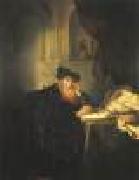 |
KONINCK, Salomon
|
|
Dutch Baroque Era Painter, 1609-1656
He began his training in 1621 with David Colijns (c. 1582-after 1668), who gave him drawing lessons. He was then apprenticed to Fran?ois Venant (brother-in-law of Pieter Lastman) and completed his training with Claes Cornelisz. Moeyaert. By 1632 Salomon was a member of the Amsterdam Guild of St Luke. His wife Abigail was the daughter of the painter Adriaen van Nieulandt. |
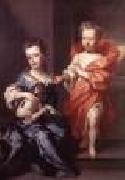 |
KNELLER, Sir Godfrey
|
|
German-born English Baroque Era Painter, 1646-1723
English painter and draughtsman of German birth. He was the leading portrait painter in England during the late 17th century and the early 18th, and, as such, the chief recorder of court society for almost 40 years. He popularized the kit-cat format for portraits and was also the founding governor in 1711 of the first proper academy of art in England. His older brother Johann [John] Zachary Kneller (b L?beck, 1642; d London, 1702), with whom he was close, was also a painter; his works include watercolour miniatures and still-lifes, |
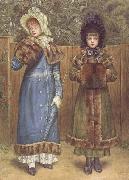 |
Kate Greenaway,RWS,RI
|
|
1846-1901
English painter, illustrator and writer. The daughter of a Fleet Street wood-engraver, John Greenaway (1818-90), she trained at Islington School of Art, Heatherleys Academy and the Slade School of Fine Art, all in London. In 1868 she did her first commercial work, producing Christmas and Valentine cards for Marcus Ward, Belfast. |
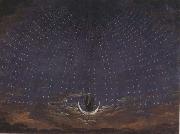 |
Karl friedrich schinkel
|
|
German Painter and Architect, 1781-1841
German architect and painter. As state architect of Prussia (from 1815), he executed many commissions for Frederick William III and other royal family members. He based his work on the revival of various historical styles. His mausoleum for Queen Louise (1810) and the brick and terra-cotta Werdersche Kirche, Berlin (1821 ?C 30), are among the earliest Gothic Revival designs in Europe. Other works include the Greek Revival Schauspielhaus (1818) and Altes Museum (1822 ?C 30), both in Berlin. In 1830 Schinkel became director of the Prussian Office of Public Works; his work as a city planner resulted in new boulevards and squares in Berlin. |
 |
Karel skreta
|
|
(1610, Prague - July 30, 1674, Prague) was a Czech Baroque painter.
Karel learnt painting perhaps from one of the masters at the royal courtyard. He studied in Saxony and in Italy. According to Houbraken he painted portraits and lived together with the respected watercolor painter Willem Bouwer in Rome. He became a member of the Bentvueghels with the nickname Slagzwaart or Slach-sweerd.According to the RKD he was the teacher of the Prague painter Johann Georg Heinsch (1640-1713).
Since 1638 he lived in Prague, where he worked on altarpieces for many churches, for example St. Thomas, St. Stephen or the Church of Our Lady in front of Týn.
|
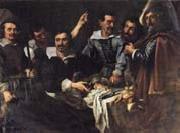 |
Justus Suttermans
|
|
(b Antwerp, bapt 28 Sept 1597; d Florence, 24 April 1681).
Flemish painter
Flemish painter,He is chiefly notable for his portraits of members of the Medici family as he was his court painter. His work can be found in both the Palatina Gallery and the Uffizi Gallery in Florence, and in many other galleries around the globe. During his lifetime he was feted as the finest portrait painter in Italy. He studied early on in Flanders and Antwerp, possibly with artists such as Villem de Vos, a nephew of the painter Marten de Vos and also Frans Pourbus the younger. He was eventually invited to Florence under the patronage of the Medici Family where he studied Italian portraitists such as Il Guercino, the Spanish Diego Velazquez and France's Pierre Mignard. |
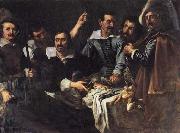 |
Justus Sustermans
|
|
(28 September 1597 - 23 April 1681), also known as Giusto Sustermans, was a Flemish painter in the Baroque style. He was born in Antwerp and died in Florence.
Sustermans is chiefly notable for his portraits of members of the Medici family as he was their court painter. His work can be found in both the Palatina Gallery and the Uffizi Gallery in Florence, and in many other galleries around the globe. During his lifetime he was feted as the finest portrait painter in Italy. |
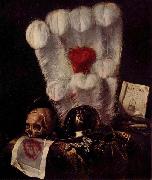 |
Juriaen van Streeck
|
|
(1632 - 1687) was a Dutch Golden Age painter of still lifes.
According to Houbraken, he was good at all sorts of still life subjects, including helmets, books, letters, musical instruments, and skulls or dead animals to indicate the transcience of life.
He was a follower of Willem Kalf and influenced Barend van der Meer.Houbraken also wrote an entry for his son Hendrick van Streeck, who became a student of Emanuel de Witte and painted church interiors.
|
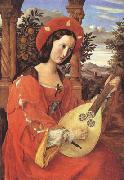 |
Julius Schnorr von Carolsfeld
|
|
1794-1872
Painter and draughtsman, brother of Ludwig Ferdinand Schnorr von Carolsfeld. He was taught engraving by his father and then trained under Heinrich Feger at the Akademie in Vienna (1811-15). Though not particularly excited by the curriculum, he was inspired by his friendship with Ferdinand Olivier and Joseph Anton Koch and the circle around A. W. Schlegel to an interest in both landscape sketching and in old German and Netherlandish art, as reflected in the style of the detailed pen drawing of the Prodigal Son (1816; Dresden, Kupferstichkab.). From 1815 to 1818 he lived in the house of Ferdinand Olivier, whose step-daughter, Marie Heller, he later married. A painting of 1817, St Roch Distributing Alms |
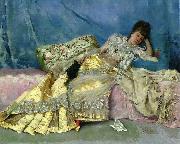 |
Julius LeBlanc Stewart
|
|
(September 6, 1855, Philadelphia, Pennsylvania - January 5, 1919, Paris, France), was an American artist who spent his career in Paris. A contemporary of fellow expatriate painter John Singer Sargent, Stewart was nicknamed "the Parisian from Philadelphia."
His father, the sugar millionaire William Hood Stewart, moved the family to Paris in 1865, and became a distinguished art collector and an early patron of Fortuny and the Barbizon artists. Julius studied under Eduardo Zamacois as a teenager, under Jean-Leo Grôme at the École des Beaux Arts, and later was a pupil of Raymondo de Madrazo.
Stewart's family wealth enabled him to live a lush expatriate life and paint what he pleased, often large-scaled group portraits. The first of these, After the Wedding (1880), showed the artist's brother Charles and his bride Mae, daughter of financier Anthony J. Drexel, leaving for their honeymoon. |
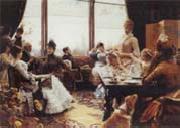 |
Julius L.Stewart
|
|
American Painter, 1855-1919
American artist, was born in Philadelphia. His father, William Hood Stewart, was a distinguished collector of the fine arts, an early patron of Fortuny and the Barbizon artists, and lived in Paris during the latter part of his life. The son was a pupil of JL Gerome, at the Ecole des Beaux Arts, and of Raymondo de Madrazo. Among his principal paintings are The Hunt Ball, Essex Club, Newark, New Jersey. |
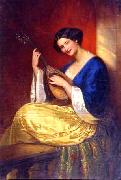 |
Julie Wilhelmine Hagen-Schwarz
|
|
(born October 27, 1824 near Tartu - died Tartu October 7, 1902) was an Estonian painter of Baltic German origin. She studied in Dresden with Friedrich Gonne and later in Munich with Johann Moritz Rugendas. |
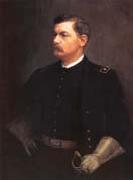 |
Julian Scott
|
|
American, 1846-1901 ,was born in Johnson, Vermont and was a Union Army drummer during the American Civil War who received America highest military decoration the Medal of Honor for his actions at the Battle of Lee Mills, he was also an American painter and a Civil War artist. Scott received his youthful education at the Lamoille Academy, known today as Johnson State College where the main gallery is named in his memory. Scott continued his studies graduating from the National Academy of Design in New York and subsequently studied under Emmanuel Leutze until 1868. During the Civil War, Scott enlisted in the 3rd Vermont Infantry on June 1, 1861, at the age of 15 as a fifer and in February 1865, was awarded the Medal of Honor for rescuing wounded under enemy fire during the Battle at Lee Mills, Virginia. When the war was over he traveled to Paris and Stuttgart to continue his education. Scott 1872 masterwork, the Battle of Cedar Creek, is located at the Vermont State House. The painting illustrates the contributions of his home state of Vermont in the American Civil War In 1890, and is significant for its absence of glorification of war and instead shows the suffering and human sacrifice associated with war making. Scott traveled west as part of a census party, painting Native Americans in New Mexico, Arizona and Oklahoma. Many of his works from this expedition now hang in the University of Pennsylvania Museum of Art. Scott was interred in Hillside Cemetery located in Scotch Plains, New Jersey |
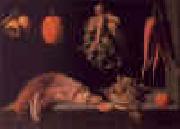 |
Juan Sanchez-Cotan
|
|
Spanish
1561-1627
S??nchez Cot??n was born in the town of Orgaz, near Toledo. He was a friend and perhaps pupil of Blas de Prado, an artist famous for his still lifes whose mannerist style with touches of realism, the disciple developed further. Cot??n began by painting altar pieces and religious works. For approximately twenty years, he pursued a successful career in Toledo as an artist, patronized by the city??s aristocracy, painting religious scenes, portraits and still lifes. These paintings found a receptive audience among the educated intellectuals of Toledo society. S??nchez Cot??n executed his notable still lifes around the turn of the seventeenth century, before the end of his secular life. An example (seen above) is Quince, Cabbage, Melon and Cucumber (1602, in the San Diego Museum of Art).
On August 10, 1603, Juan Sanchez Cotan, then in his forties, closed up his workshop at Toledo to renounce the world and enter the Carthusian monastery Santa Maria de El Paular. He continued his career painting religious works with singular mysticism. In 1612 he was sent to the Granada Charterhouse, he decided to become a monk, and in the following year he entered the Carthusian monastery at Granada as a laybrother. The reasons for this are not clear, though such action was not unusual in Cot??n??s day.
Cotan was a prolific religious painter whose work, carried out exclusively for his monastery, reached its peak about 1617 in the cycle of eight great narrative paintings which he painted for the cloister of the Granada Monastery. These depict the foundation of the order of St. Bruno, and the prosecution of the monks in England by the Protestants.
Although the painter??s religious works have an archaic air, they also reveal a keen interest in the treatment of light and volumes, and in some respect are comparable with certain works by the Italian Luca Cambiaso whom Cotan knew at the Escorial. While Cotan's religious works are unexceptional, as a still-life painter he ranks with the great names of European painting.
In spite of his retreat from the world, Cotan??s influence remained strong. His concern with the relationships among objects and with achieving the illusion of reality through the use of light and shadow was a major influence on the work of later Spanish painters such as Juan van der Hamen, Felipe Ramirez, the brothers Vincenzo and Bartolomeo Carducci and, notably, Francisco de Zurbaran. Sanchez Cotan ended his days universally loved and regarded as a saint. He died in 1627 in Granada. |
 |
Juan Sanchez Cotan
|
|
(June 25, 1560 - September 8, 1627) was a Spanish Baroque painter, a pioneer of realism in Spain. His still lifes, also called bodegones were painted in a strikingly austere style, especially when compared to similar works in Netherlands and Italy.
Senchez Coten was born in the town of Orgaz, near Toledo, Spain. He was a friend and perhaps pupil of Blas de Prado, an artist famous for his still lifes whose mannerist style with touches of realism, the disciple developed further. Cotan began by painting altar pieces and religious works. For approximately twenty years, he pursued a successful career in Toledo as an artist, patronized by the city's aristocracy, painting religious scenes, portraits and still lifes. These paintings found a receptive audience among the educated intellectuals of Toledo society. Senchez Cotan executed his notable still lifes around the turn of the seventeenth century, before the end of his secular life. An example (seen above) is Quince, Cabbage, Melon and Cucumber (1602, in the San Diego Museum of Art).
On August 10, 1603, Juan Sanchez Cotan, then in his forties, closed up his workshop at Toledo to renounce the world and enter the Carthusian monastery Santa Maria de El Paular. He continued his career painting religious works with singular mysticism. In 1612 he was sent to the Granada Charterhouse, he decided to become a monk, and in the following year he entered the Carthusian monastery at Granada as a laybrother. The reasons for this are not clear, though such action was not unusual in Cotan's day. |
 |
Jozef Simmler
|
|
Jozef Simmler (March 14, 1823 - March 1, 1868) was a Polish painter known for his classical style and his Polish subjects.
Perhaps his most famous work is Death of Barbara Radziwillowna. an oil on canvas work completed in 1860. It now hangs in the National Museum, Warsaw. His daughter's brother-in-law was Eduard Strasburger, the famous Polish-German botanist. One of Simmler's grandsons was Henryk Leon Strasburger, a Polish delegate to the League of Nations
|
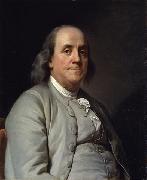 |
Joseph-Siffred Duplessis
|
|
(22 September 1725 - 1 April 1802) was a French painter, known for the clarity and immediacy of his portraits.
He was born in Carpentras, near Avignon, into a family with an artistic bent and received his first training from his father, a surgeon and talented amateur, then with Joseph-Gabriel Imbert (1666-1749), who had been a pupil of Charles Le Brun. From 1744-47 or later he worked in Rome, in the atelier of Pierre Subleyras, who was also from the south of France, who died in 1749. In Italy Duplessis became fast friends with Joseph Vernet, another Occitan.
He returned to Carpentras, spent a brief time in Lyon then arrived about 1752 in Paris, where he was accepted into the Academie de Saint-Luc and exhibited some portraits, which were now his specialty, in 1764, but did not achieve much notice until his exhibition of ten paintings at the Paris salon of 1769, very well received and selected for special notice by Denis Diderot; the Academie de peinture et de sculpture accepted him in the category of portraitist, considered a lesser category at the time. He continued to exhibit at the Paris salons, both finished paintings and sketches, until 1791, and once more, in 1801.
His portrait of the Dauphine in 1771 and his appointment as a peintre du Roi assured his success: most of his surviving portraits date from the 1770s and 1780s. He received privileged lodgings in the Galeries du Louvre. In the Revolution, he withdrew to safe obscurity at Carpentras during the Reign of Terror. Afterwards, from 1796, he served as curator at the newly-founded museum formed at Versaillles, so recently emptied of its furnishings at the Revolutionary sales. His uncompromising self-portrait at this time of his life is at Versailles, where he died.
|
 |
Joseph-Siffred Duplessis
|
|
1725-1802
French
Joseph Siffred Duplessis Locations
French painter. He trained with his father, an amateur painter, and then with Joseph-Gabriel Imbert (1666-1749), a pupil of Charles Le Brun. In 1744 he went to Rome and worked with Pierre Subleyras. He remained there until at least 1747 and possibly until the death of his master in 1749. He must have learnt portrait painting in Rome, but he also painted landscapes, because Joseph Vernet advised him to specialize in this genre. |
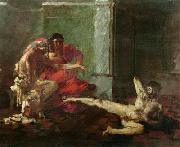 |
Joseph-Noel Sylvestre
|
|
(1847-1926) was a French artist, notable for his studies of classic scenes from antiquity. He was born in Beziers in South-West France on 24 June 1847, training as an artist first in Toulouse under Thomas Couture, then at the École des Beaux-Arts in Paris under Alexandre Cabanel. He was an exponent of the romantic Academic art style, also known as art pompier (fireman's art), examples of which are the Death of Seneca (1875), The Gaul Ducar decapitates the Roman general Flaminus at the Battle of Trasimene (1882), The Sack of Rome by the barbarians in 410 (1890) and François Rude working on the Arc de Triomphe (1893). |
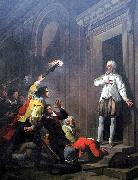 |
Joseph-Benoit Suvee
|
|
(3 January 1743 - 9 February 1807) was a Flemish painter strongly influenced by French neo-classicism.
He was born in Bruges. Initially a pupil of Matthias de Visch, he came to France aged 19 and became a pupil of Jean-Jacques Bachelier. In 1771, he won the Prix de Rome. In Rome from 1772 to 1778, he prolonged the usual duration allowed to pensionaries of the French Academy in Rome. He was named an academician on his return to Paris and he opened an art school for young women at the Louvre. He emulated and competed with Jacques-Louis David, earning his enduring hatred.
Named the French Academy in Rome's director in 1792, replacing François-Guillaume Menageot, he was imprisoned for a while in the Prison Saint-Lazare and only able to take up the post in 1801. After a brilliant career, and a six years' stay in Rome as the Academy's Director, he died there suddenly.
His works include Achilles depositing the body of Hector at the feet of the body of Patroclus, (1769, Louvre), and Cornelia, mother of the Gracchi, (1795, Louvre).
|
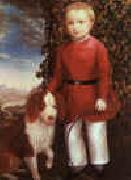 |
Joseph Whiting Stock
|
|
1815-1855
American painter. He was physically handicapped and confined to his house until his doctor advised a wheelchair, which, when placed on a railway carriage, allowed him to travel. He took painting lessons as therapy from Franklin White, a pupil of Chester Harding, and became proficient as an artist. This enabled him to make a living painting portraits, landscapes and miniatures throughout New England and part of New York State. He kept a journal that lists 912 examples of his work executed between 1832 and 1846, with the names of his sitters, canvas sizes, the prices charged and where the pictures were painted. No examples of his landscapes have survived and only a few of his 80 miniatures have been located. The earliest miniatures date from 1836, but most were executed in 1842 and 1845 when he lived in New Bedford, MA. Few American primitive artists of the 19th century were as productive as Stock. |
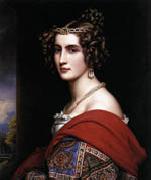 |
Joseph Stieler
|
|
German Painter, 1781-1858,German painter. In 1798 he studied under Christoph Fesel (1737-1805) in Werzburg and in 1800 with Heinrich Feger in Vienna, where his style was strongly influenced by English portraiture. After he studied in Paris (1807-8) with Fran?ois G?rard the influence of Neo-classicism became apparent in his work. He visited Italy in 1809, 1810 and 1812 to do commissioned portraits for various patrons, among them Prince Eugene de Beauharnais (1809; Munich, Bayer. Nmus.) and Joachim Murat, King of Naples (reg 1808-15). In 1812 he went to Munich where he did work for middle-class clients, the nobility and the royal family of Bavaria (e.g. the portrait of Maximilian I Joseph, 1816; Ellingen, Schloss). In 1820 he was appointed court painter to Ludwig I, King of Bavaria (reg 1825-48), and painted several portraits of him. In 1823 he helped co-found the Kunstverein in Munich. He was one of the most important portrait painters in the Neo-classical style, specializing particularly in studies of women, as seen in the 36 portraits commissioned by Ludwig I for the Schenheitsgalerie (1827-42; Munich, Schloss Nymphenburg). In his portraits for the middle classes and for the court he devised certain peculiarities of form. He painted various members of the royal houses of Austria, Prussia and Sweden, as well as members of the nobility in the duchies of Saxe-Altenberg, Saxe-Coburg and Hesse. His sitters also included some of the most important figures in the political and intellectual life of Germany in the first half of the 19th century. He painted the pendant portraits of Franz Brentano and Antonie Brentano (both 1808; Winkel, Brentanohaus), Johann Wolfgang von Goethe (1828; Munich, Neue Pin.) and Ludwig Tieck (1838; Berlin, Schloss Charlottenburg), the geographer and botanist Alexander von Humboldt (1843; Potsdam, Schloss Charlottenhof) and the musician Ludwig van Beethoven (Bonn, Beethoven-Haus). After 1845 the classical elements in his paintings were sometimes combined with an application of colour typical of plein-air studies. He also painted genre pictures and religious scenes. |
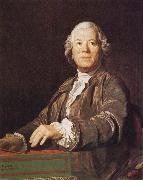 |
Joseph Siffred Duplessis
|
|
French Painter, 1725-1802
was a French painter, known for the clarity and immediacy of his portraits. He was born into a family with an artistic bent and received his first training from his father, a surgeon and talented amateur, then with Joseph-Gabriel Imbert (1666?C1749), who had been a pupil of Charles Le Brun. From 1744-47 or later he worked in Rome, in the atelier of Pierre Subleyras, who was also from the south of France, who died in 1749. In Italy Duplessis became fast friends with Joseph Vernet, another Occitan. He returned to Carpentras, spent a brief time in Lyon then arrived about 1752 in Paris, where he was accepted into the Academie de Saint-Luc and exhibited some portraits, which were now his specialty, in 1764, but did not achieve much notice until his exhibition of ten paintings at the Paris salon of 1769, very well received and selected for special notice by Denis Diderot; the Academie de peinture et de sculpture accepted him in the category of portraitist, considered a lesser category at the time. He continued to exhibit at the Paris salons, both finished paintings and sketches, until 1791, and once more, in 1801. His portrait of the Dauphine in 1771 and his appointment as a peintre du Roi assured his success: most of his surviving portraits date from the 1770s and 1780s. He received privileged lodgings in the Galeries du Louvre. In the Revolution, he withdrew to safe obscurity at Carpentras during the Reign of terror. Afterwards, from 1796, he served as curator at the newly-founded museum formed at Versaillles, so recently emptied of its furnishings at the Revolutionary sales. His uncompromising self-portrait at this time of his life is at Versailles. His adjusted his style to the social condition of his sitter: his portrait of Charles-Claude, comte d'Angiviller, director of the Batiments du Roi, is as distant and conventional as his state portrait of Louis XVI in coronation robes (1776), while his realistic and intimate portrait of the opera composer Christoph Willibald Gluck (Kunsthistorisches Museum, Vienna) catches the composer at the keyboard in a moment of inspiration and his penetrating portrait of the sculptor Christophe Gabriel Allegrain (Louvre Museum, illustration) shows him having just laid down his chisel: this was the morceau de reception that gained him admittance to the Academie. Duplessis' Benjamin Franklin on the U.S. hundred dollar billHis portrait of Benjamin Franklin (1778), |
 |
Joseph Severn
|
|
(7 December 1793 - 3 August 1879) was an English portrait and subject painter and a personal friend of the famous English poet John Keats. He exhibited portraits, Italian genre, literary and biblical subjects, and a selection of his paintings can today be found in some of the most important museums in London, including the National Portrait Gallery, the Victoria and Albert Museum and the Tate Britain.
The eldest son of a music teacher, Severn was born at Hoxton, near London, and apprenticed at the age of 14 to William Bond, an engraver. Severn was one of seven children; two of his brothers, Thomas (1801-1881) and Charles (1806-1894), became professional musicians, and Severn himself was an adroit pianist. During his early years he practised portraiture as a miniaturist.
|
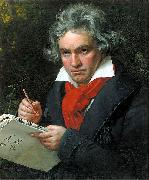 |
Joseph Karl Stieler
|
|
(1 November 1781 - 9 April 1858) was a German painter. Born in Mainz to a family of engravers and die-cutters, Stieler received some artistic training from his father, August Friedrich Stieler (1736 - 1789). Stieler began his career as a painter of miniatures.
His portrait style was most especially shaped during his work in the Parisian atelier of Francois Gerard, a student of Jacques-Louis David. In 1808, he established himself as an independent portraitist in Frankfurt am Main. He traveled through Italy in 1810. In 1816, he traveled to Vienna to paint the portrait of Emperor Francis I of Austria. Between February and April 1820, he worked on his portrait of Beethoven, which is probably the most well-known representation of the composer today.
Stieler worked mainly in the service of the Bavarian court. His painted likenesses in Schloss Nymphenburg, Schönheitengalerie, the so-called Gallery of Beauties, were commissioned by King Ludwig I. Stieler also painted the portraits of Goethe, Amalia of Greece, Friedrich Wilhelm Joseph von Schelling, Johann Ludwig Tieck, and Alexander von Humboldt.
The most distinguishing feature of Stieler's portraits is his utter focus on the sitter. Decorative additions are left out, and there is nothing that distracts the viewer's scrutiny. Stieler accomplished this concentration through deliberate light - dark contrast, which above all highlights the accurately characterized facial features.
He died in Loytown.
|
 |
Josef Schmitz
|
|
Johann Josef Schmitz (1784-)Aliases: Johan Joseph SchmitzProfessions: Landscape painter. |
|

